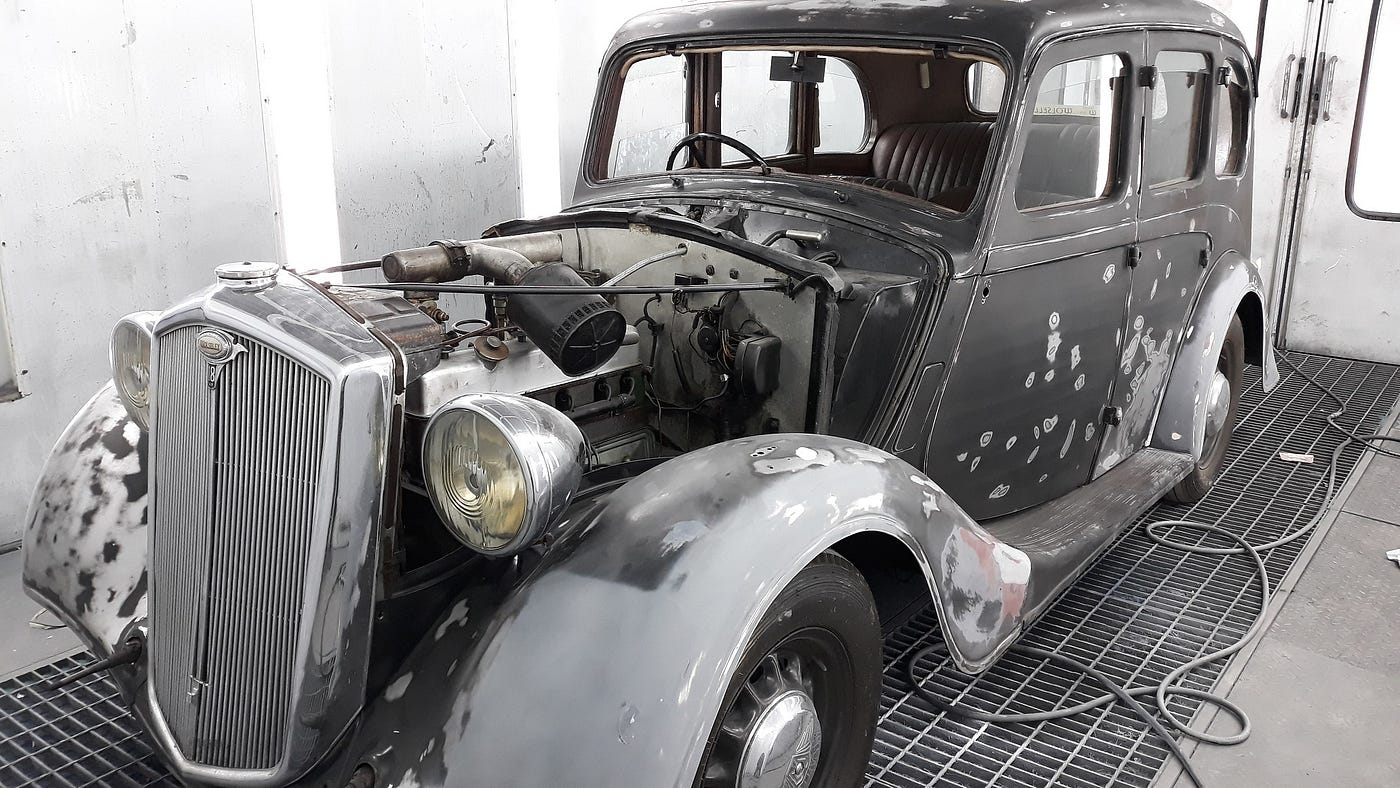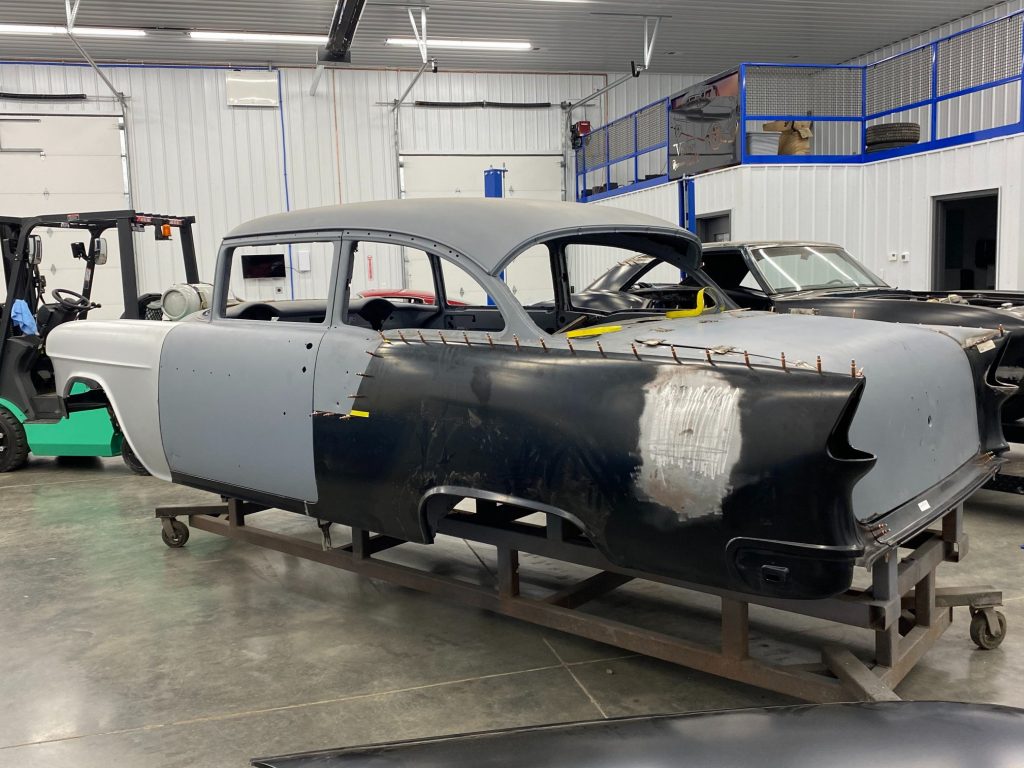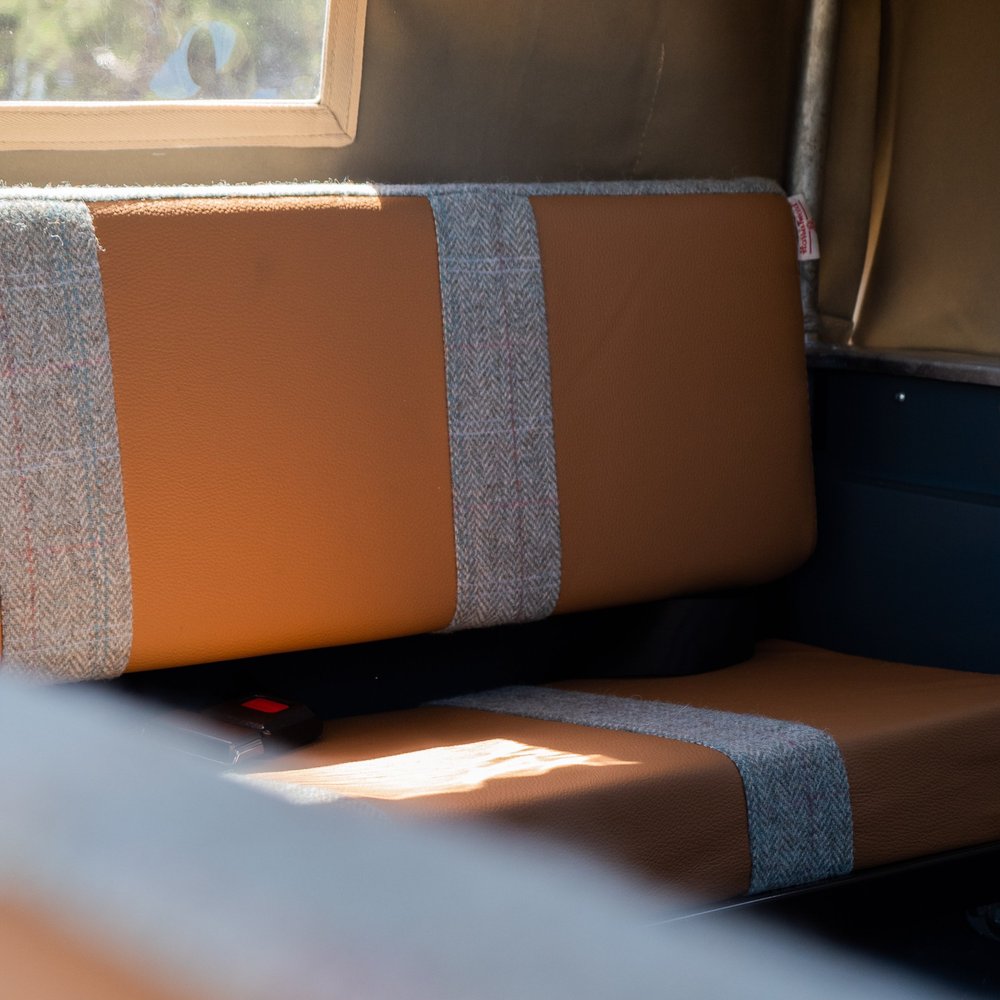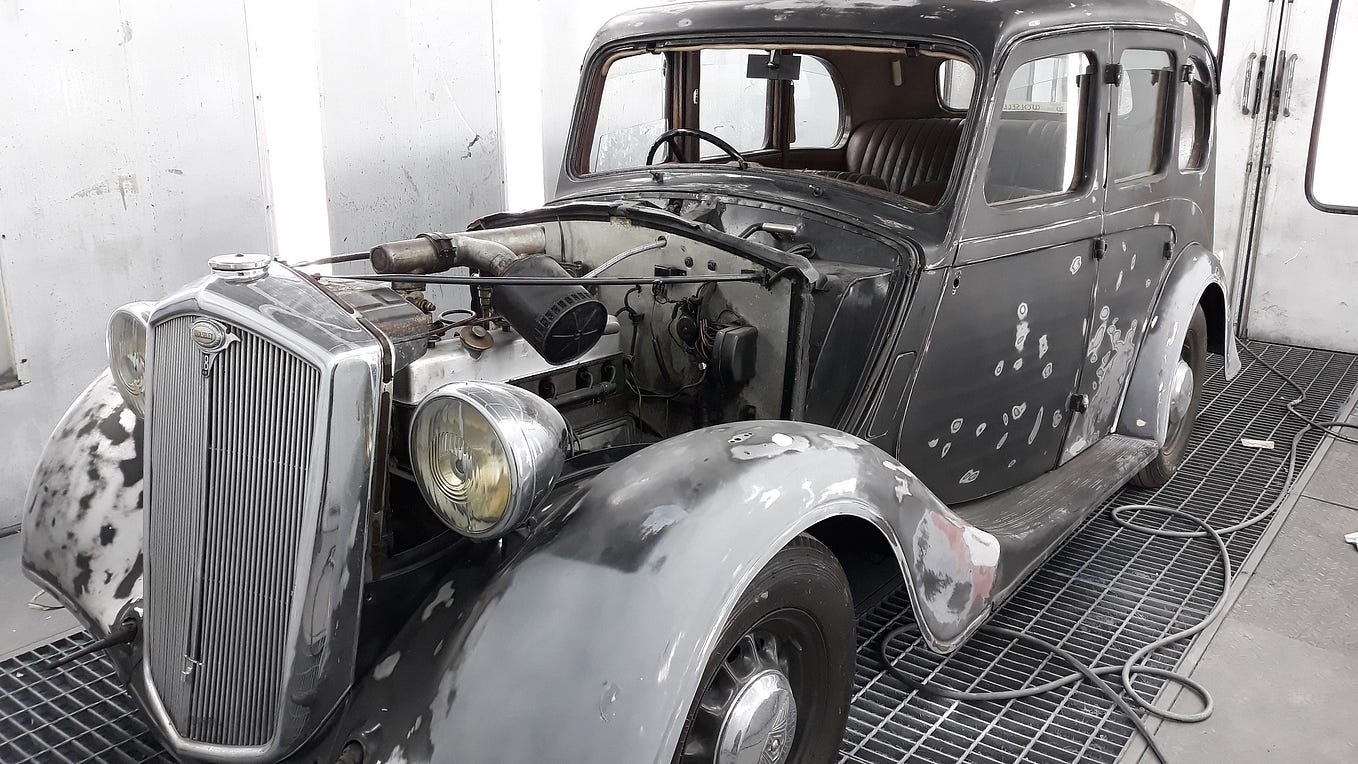Introduction

The world of classic car restoration is a captivating realm that combines artistry, craftsmanship, and a deep appreciation for automotive history. Restoring a classic car allows owners to bring a piece of the past back to life, turning it into a timeless masterpiece that can be enjoyed for years to come. However, the journey from a neglected old car to a shining symbol of automotive excellence is not without its challenges. From extensive research and meticulous planning to painstaking work on the engine, body, and interior, transforming a classic car requires a skilled hand and a passion for perfection. In this article, we will explore the process of restoring a classic car, highlighting each step along the way and the joys that come with seeing the finished masterpiece.
Introduction to classic car restoration and its appeal

Classic car restoration is a captivating process that combines artistry, craftsmanship, and a deep appreciation for automotive history. Restoring a classic car allows owners to bring a piece of the past back to life, transforming it into a timeless masterpiece that can be enjoyed for years to come. The appeal of classic car restoration lies in the opportunity to preserve a piece of automotive heritage, showcase the original design and craftsmanship, and relive a bygone era. It's a chance to pay homage to the golden age of automotive design and engineering while breathing new life into a cherished piece of history.
The process and challenges of transforming a classic car

Transforming a classic car into a timeless masterpiece is an intricate process that requires dedication, skill, and attention to detail. The restoration journey typically begins with stripping the car down to its bare frame, addressing any rust or damage, and meticulously prepping the body for the next stages. The engine and mechanical components are then carefully restored, sometimes with modern upgrades for enhanced performance and reliability. Bodywork and paint restoration follow, where the car's body panels and frame are repaired, and a perfect paint color and finish are chosen. Finally, the interior is restored, balancing the preservation of the classic look with the incorporation of modern comforts. Throughout this process, challenges may arise, such as sourcing rare parts, addressing hidden damage, or achieving an authentic finish. However, the reward of witnessing a classic car transformed into its former glory makes all the challenges worthwhile.
Research and Planning

Research and planning play a crucial role in the restoration of a classic car. Before embarking on the restoration journey, it is important to thoroughly research the history and specifications of the particular car model. This includes understanding its original design, unique features, and any modifications that may have been made over the years. Additionally, creating a detailed restoration plan is essential. This plan should outline the specific steps and processes that will be undertaken during the restoration, as well as the budget and timeline for completion. Research and planning provide a solid foundation for a successful restoration project, ensuring that every detail is carefully considered and executed.
Researching the history and specifications of the classic car
Researching the history and specifications of a classic car is an essential step in the restoration process. It allows the restorer to understand the car's original design, unique features, and any modifications that may have been made over the years. This research can involve consulting official records, archival documents, and online resources to gather accurate information. By delving into the car's history, the restorer gains valuable insights that will guide the restoration process and ensure authenticity. Detailed specifications provide a blueprint for recreating the car's original condition, from the engine and drivetrain to the interior and exterior details. meticulous research and documentation are key to creating a timeless masterpiece.
Creating a detailed restoration plan

Creating a detailed restoration plan is a crucial step in the process of transforming a classic car. It involves carefully assessing the condition of the car and documenting the specific areas that require restoration. This plan serves as a roadmap for the restorer, outlining the necessary repairs and enhancements needed to bring the car back to its original glory. The plan should include a comprehensive timeline, budget, and a list of required materials and services. By creating a detailed restoration plan, the restorer can minimize the risk of overlooking any important aspects and ensure a smooth and successful restoration process.
Stripping and Prep Work

Stripping and Prep Work is a crucial phase in the restoration process of a classic car. It involves carefully stripping the car down to its bare frame, removing all components, and categorizing them for inspection and restoration. This step allows the restorer to assess the condition of the body and address any rust, dents, or damage before proceeding further. It also provides an opportunity to clean and organize all parts for easy access during the restoration process. By paying meticulous attention to detail and taking the necessary prep work, the restorer can ensure a solid foundation for the rest of the restoration process.
Stripping the car down to its bare frame

Stripping the car down to its bare frame is a crucial step in the restoration process. This involves carefully removing all components of the car, including the body panels, interior, and mechanical parts, until only the frame remains. By doing this, the restorer gains full access to every nook and cranny of the car, allowing for a thorough inspection and assessment of the condition. This process also provides the opportunity to catalog and organize all the parts for easy access during the restoration. By starting with a clean slate, the restorer can effectively address any rust, dents, or damage to ensure a solid foundation for the rest of the restoration process.
Prepping the body and addressing any rust or damage

When prepping the body of a classic car for restoration, it is important to address any rust or damage that may be present. This process often involves removing any affected panels, sanding down the affected areas, and applying rust treatment to prevent further corrosion. The restorer may also need to repair or replace damaged body parts to ensure a clean and smooth surface. Additionally, the body may need to be straightened and aligned to ensure proper fitment during reassembly. By taking the time to properly address any rust or damage, the restorer can ensure that the final result is a car that not only looks incredible but also has a solid and durable body structure.
Engine and Mechanical Restoration

Restoring the engine and other mechanical components is a crucial step in the classic car restoration process. This involves disassembling the engine, cleaning all parts, and inspecting for any signs of wear or damage. Repairs may include replacing worn-out components, such as pistons, valves, or bearings. Once the engine is rebuilt, it is important to test its performance and make adjustments as needed. Additionally, the entire mechanical system, including the suspension, brakes, and transmission, should be thoroughly inspected and restored to ensure optimal functionality. Upgrades can also be made to enhance the car's performance and reliability, such as installing modern ignition systems or fuel injection. By addressing the engine and mechanical components, the restorer can ensure that the classic car not only looks stunning but also runs smoothly on the road.
Restoring the engine and other mechanical components

Restoring the engine and other mechanical components is a vital aspect of classic car restoration. The first step involves disassembling the engine and thoroughly cleaning each part to remove dirt and debris. The components are then meticulously inspected for signs of wear or damage. Any worn-out parts, such as pistons, valves, or bearings, are replaced to ensure optimal functionality. The engine is then rebuilt, and its performance is tested and adjusted as needed. Alongside the engine, the entire mechanical system, including the suspension, brakes, and transmission, is inspected and restored. Upgrades can also be made to enhance the car's performance and reliability, such as modern ignition systems or fuel injection. By restoring the engine and mechanical components, the classic car not only looks stunning but also runs smoothly on the road.
Upgrading for enhanced performance and reliability

When restoring a classic car, upgrading certain components can significantly enhance its performance and reliability. Upgrades can include modernizing the ignition system, installing electronic fuel injection for better fuel efficiency, or upgrading the suspension and brakes for improved handling and safety. These enhancements not only enhance the driving experience but also ensure the car can handle modern road conditions with ease. Upgrading the car's mechanical components can provide a balance between preserving its classic appeal and enjoying the benefits of modern automotive technology. It's essential to carefully research and select the appropriate upgrades that align with the car's original specifications and intended use.
Bodywork and Paint

Restoring the bodywork and paint of a classic car is a crucial part of the overall restoration process. The first step involves repairing any rust or damage to the car's body panels and frame. This may include welding, patching, and straightening out any dents or imperfections. Once the bodywork is complete, it's time to choose the perfect paint color and finish. The paint job should be done meticulously, with attention to detail and precision. The goal is to achieve a flawless and glossy finish that brings the car back to its original aesthetic appeal. A high-quality paint job not only enhances the visual appeal but also protects the car from rust and corrosion.
Repairing and restoring the car's body panels and frame

Repairing and restoring the car's body panels and frame is a critical step in the classic car restoration process. This involves carefully assessing the extent of the damage, whether it be rust, dents, or other imperfections, and then implementing the necessary repairs. Welding, patching, and straightening techniques are used to bring the body panels and frame back to their original shape. The goal is to achieve a structurally sound and visually appealing result. Attention to detail and precision are essential to ensure a seamless finish. By addressing any bodywork issues, the car's structural integrity is restored, ensuring its longevity and overall aesthetic appeal.
Choosing the perfect paint color and finish

Choosing the perfect paint color and finish is an important aspect of classic car restoration. It not only enhances the overall aesthetic appeal of the vehicle but also helps to maintain its authenticity. When choosing a paint color, it is essential to consider the car's original color and any historical significance. Researching the original paint codes and consulting with experts can ensure an accurate restoration. The finish, whether it be matte, glossy, or metallic, should be chosen based on the desired look and the car's era. A high-quality paint and proper application techniques will result in a stunning and durable finish that will withstand the test of time.
Interior Restoration

Restoring the interior of a classic car is a crucial part of the overall restoration process. It involves reviving and rejuvenating the seats, carpets, dashboard, and other interior components. Careful attention is paid to maintaining the original design and aesthetics while ensuring comfort and functionality. The restoration process may include replacing worn-out upholstery, repairing or refinishing wood trim, and restoring vintage gauges and controls. Modern comforts, such as improved sound systems or air conditioning, can be added without compromising the classic look. A skilled interior restoration can bring back the original charm of the car's interior and provide a comfortable driving experience for years to come.
Restoring the car's interior, including seats, carpets, and dashboard

Restoring the car's interior is a delicate and intricate process that focuses on reviving the seats, carpets, and dashboard while preserving the original design and aesthetic appeal. Skilled restoration specialists pay meticulous attention to detail, ensuring that every component is carefully refurbished or replaced to match the car's original specifications. This may involve reupholstering worn-out seats, replacing faded or damaged carpets, and refinishing the dashboard to its former glory. Additionally, vintage gauges and controls may be restored to their original condition. While maintaining the classic look, modern comforts such as improved sound systems or air conditioning can be seamlessly integrated into the interior, providing a comfortable and enjoyable driving experience.
Adding modern comforts while maintaining the classic look

When restoring a classic car, it is important to strike a balance between preserving its original charm and incorporating modern comforts. While the goal is to maintain the vintage aesthetic, there are ways to enhance the driving experience. Upgrades such as modern sound systems, air conditioning, or power steering can be seamlessly integrated into the interior without compromising the classic look. Skilled restoration specialists carefully select components that blend seamlessly with the car's original design, ensuring that the modern additions do not stand out. This allows for a comfortable and enjoyable driving experience while still capturing the timeless appeal of the classic car.
Conclusion

In conclusion, restoring a classic car is a labor of love that allows enthusiasts to revive the timeless beauty of these masterpieces. Through meticulous research, planning, and skilled craftsmanship, a classic car can be transformed into a true work of art. The joy and satisfaction of seeing the finished masterpiece, with its original charm and modern enhancements, is immeasurable. To preserve the restored classic car, regular maintenance and care are essential. By following proper preservation techniques and ensuring regular servicing, owners can continue to enjoy their timeless beauty for years to come. Restoring a classic car not only honors its rich history but also allows for the enjoyment of a truly unique driving experience.
The joy of seeing a classic car restored to its former glory

Restoring a classic car is not just a labor-intensive process, but also a journey of emotions and fulfillment. The joy that comes with seeing a classic car transformed into its former glory is indescribable. Witnessing the once worn-out body panels shining with a fresh coat of paint, the engine purring to life, and the interior restored to its original elegance is truly gratifying. The dedication and commitment put into the restoration project become apparent when the car is finally completed. Each detail meticulously restored and every upgrade carefully chosen, come together to create a masterpiece that captivates both the owner and those fortunate enough to admire it.
Tips for caring and preservation of the finished masterpiece

After investing time and effort into restoring a classic car to its former glory, it's crucial to take steps to preserve its beauty for years to come. Here are some essential tips for caring and preserving your finished masterpiece:
- Regular maintenance: Follow the manufacturer's maintenance schedule and perform routine checks on the car's systems, including the engine, brakes, and electrical components.
- Storage: Store the car in a climate-controlled environment to protect it from extreme temperatures and humidity.
- Cleaning: Regularly wash the car with a gentle soap and use a soft cloth to dry it. Avoid harsh chemicals that can damage the paint.
- Waxing: Apply a high-quality automotive wax to protect the paint and provide a glossy finish.
- Avoid direct sunlight: Park the car in shaded areas or use a car cover to protect it from harmful UV rays.
- Drive responsibly: Use the car for enjoyable drives but avoid excessive speeds and reckless driving that can cause damage.
- Document and protect: Keep a detailed record of the restoration process and any maintenance or repairs performed. Consider obtaining classic car insurance to protect your investment.
By following these tips, you can ensure that your classic car remains a timeless masterpiece for generations to come.